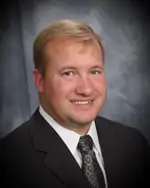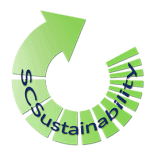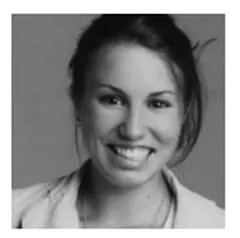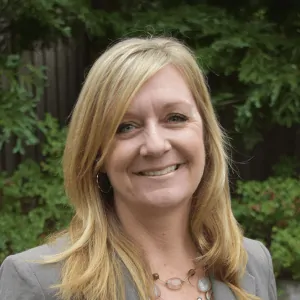

Be part of the community of change by participating in GreenBiz23 conference and expo, February 14-16, in Scottsdale, Arizona.
Today’s sustainability professional is under pressure to do more, and do it faster, than ever before. What will it take to address the complex issues on your plate at the scale, scope and speed required? GreenBiz 23, the premier gathering of 1,800 sustainable business leaders, will deliver the insight and inspiration you need to accelerate change.
Join the dynamic GreenBiz 23 community to harness the knowledge of experts, peers and new voices to help you achieve net zero, advance the circular economy, elevate social justice, safeguard biodiversity, build resilient supply chains and more. You’ll gain access to inspiring keynotes, engaging breakout sessions and valuable networking that will help you address these complex issues.
The conference features tracks on:
The expo will feature more than 50 organizations paving the way for sustainable business. Learn about the technologies, programs and practices that these companies are employing while forming valuable connections with members of the dynamic GreenBiz community.
To Learn More and for Registration Info
SCS Engineers is a sponsor of the 2023 Food and Beverage Environmental Conference taking place March 26-29, 2023, at the Hyatt Regency Incline Village in Lake Tahoe, Nevada.
FBEC is the premier and most comprehensive environmental event for the food and beverage industry in the United States. It brings together industry, academia, non-government organizations, and suppliers in a casual atmosphere that allows for the free flow of information and ideas. The conference includes a single program of sessions, information exchange, poster sessions, and socializing and networking events, all of which uncover the latest trends and innovations affecting water reuse, supply chain challenges, air quality and many more.
The 2023 Conference will explore the following topics and more!
Participants and attendees include craft breweries and distilleries, pet food makers, grocery stores, nutritionists, farmers, and food and beverage processors, as well as those involved in transportation, distribution, preparation, supply chain management, EHS, sustainability and wastewater solutions.
SCS Engineers is a proud Gold Level Sponsor of the 2023 National Brownfields Training Conference taking place August 8-11, 2023, at the Huntington Place Convention Center in Detroit. Visit us at BOOTH 108 and talk with our experts about your brownfield challenges.
The National Brownfields Training Conference brings together stakeholders from government, industry, and the community to share knowledge and best practices on the remediation and redevelopment of contaminated properties, known as brownfields. The conference features a range of sessions, workshops, and networking events that cover topics such as financing, liability, and community engagement, with the goal of promoting the cleanup and revitalization of contaminated sites across the United States. This year will feature seven new tracks to explore the evolving brownfields landscape with topics like Housing, Equity, and Minimizing Displacement, Environmental Justice and Public Participation, and Assessment and Cleanup Approaches.
2023 is the year to take your community to the next level with unprecedented financial and technical resources. The Bipartisan Infrastructure Law included an unprecedented $1.5 billion investment in EPA’s highly successful Brownfields Program. Learn more.
Brownfields 2023 is the premier event to learn how you can access these grants and maximize your economic, environmental, and social performance. This funding will transform communities into sustainable and environmentally just places, enhance climate resiliency, and more.
The National Brownfields Training Conference is the largest event in the nation focused on environmental revitalization and economic redevelopment. It is hosted by the US EPA and the International City/County Management Association (ICMA). The Conference attracts over 2,000 stakeholders in brownfields redevelopment and cleanup to share knowledge about sustainable reuse and celebrate the EPA brownfields program’s success. Whether you’re a newcomer or a seasoned professional, Brownfields 2023 offers something for you!
Click for program and registration information.
Welcome to Sustainable Council, SCS’s newest blog series focusing on proven solutions to get you down the road to sustainability. Private and public entities are working to become truly sustainable and responsible in their operations and public works, meeting ESG and economic goals, but often identify a gap between their planned goals and accomplishments. Every project with SCS moves you closer to those goals and can help inform your planning. We’ll publish tools, best practices, and regulatory alerts from our deep bench of experts and proven solutions to support your plans. Let’s kick off Sustainable Council with air monitoring advice from Jeff Leadford; take it away, Jeff.
SCS Engineers performs air dispersion modeling for industries and manufacturing throughout the United States. Still, there continues to be a strong focus on emission sources from the solid waste and energy industries, especially from the legal community. Air dispersion modeling is required by regulators when criteria pollutants’ potential to emit (PTE) reach certain thresholds or when toxic pollutants reach high enough emissions to require health risk assessments (HRA), among other more specific reasons. Common emission sources that are modeled at landfills, for example, include:
Submitting air dispersion modeling that shows compliance with criteria pollutant ambient air quality standards (AAQS) or HRA thresholds is essential for these operations to remain compliant.
Emission Sources Case Study
A large landfill in the San Diego area recently submitted its annual toxic pollutant emissions to the San Diego Air Pollution and Control District (SDAPCD), and this emission level triggered HRA reporting. SCS obtained all needed site information from the landfill on emission source parameters and ran the EPA-preferred air dispersion model “AERMOD” to understand where these toxic pollutants were landing outside the property boundary and at what concentrations. AERMOD takes in source parameters such as exhaust velocity and stack height from a flare and combines that with the local terrain and meteorological data to determine these concentrations at ground level. Meteorological data from a recent 1-5 year period is generally required. Next, the output of AERMOD was run in “HARP2”, the Air Dispersion Modeling and Risk Tool created by the California Air Resource Board. HARP2 can take these ground-level concentrations and turn them into a number that describes the health risk (cancer, noncancer chronic, and acute) to a population living and working in the region.
All modeling was performed and submitted to SDAPCD, focusing on specific residences, businesses, and sensitive receptors such as schools and hospitals close to the landfill. The results showed that the landfill operations demonstrated negligible risk on the closest residences, businesses, and sensitive receptors. All required modeling files were submitted to SDAPCD, and a full HRA report with figures. The report was given SDAPCD approval after the SCS team satisfied all questions and correspondence with the agency.
The experience SCS has in air dispersion modeling, health risk assessment, and industry helps simplify this process for our landfill client. SCS performs numerous assessments of emission sources and, with our in-the-field experience, has streamlined the process to be as efficient as possible, saving time and money for our clients. For additional information, please reach out to Jeff Leadford, PE, or one of SCS’s nationwide offices.
Learn More:
Meet SCS Engineers professionals and visit us at BOOTH 111 at SWANA’s SOAR (Sustainability, Operations, Action, Resources) Conference, April 17-20, at the Georgia World Congress Center in Atlanta.
SWANA’s new premier technical spring conference, themed “Technical Solutions for Resource Management,” will bring together industry professionals from ALL disciplines of the resource management community. Hear presentations by SCS professionals, including
 Nathan Hamm (co-presenting with Nathan Mayer of Solid Waste Authority of Palm Beach County and Manuel Hernandez (formerly of SCS) of Progressive Environmental Services): “Leachate Treatment and System Maintenance Issues” [Wed, April 19 (10:00 am – 10:45 am)]
Nathan Hamm (co-presenting with Nathan Mayer of Solid Waste Authority of Palm Beach County and Manuel Hernandez (formerly of SCS) of Progressive Environmental Services): “Leachate Treatment and System Maintenance Issues” [Wed, April 19 (10:00 am – 10:45 am)]Join professionals in Collection & Transfer, Landfill Gas & Biogas, Landfill Management, Waste Conversion & Energy Recovery, and Sustainable Materials Management at this enhanced and productive technical summit. Spend a few days diving deep into technical education, developing new business connections at networking events and joining game-changing conversations with experts in North America. Most importantly, you’ll leave SOAR with actionable, fact-based solutions to implement in your facilities.
Delivering practical solutions to the solid waste industry’s most difficult problems, SWANA SOAR showcases the promising technologies, ideas, and solutions that transform waste into a resource. As SWANA’s premier technical conference, SOAR connects experts and problem solvers in industry-changing conversations about your most complex challenges.
Click for more details and registration information
Setting up a school zero waste program takes time, patience, excellent collaboration and communication, and a team that wants to achieve the same goal of zero waste. Tracie Bills recommends a realistic approach in her article. She provides examples and describes how a consulting firms, such as SCS Engineers, assist schools without materials management programs to launch zero waste programs.
Building a successful program does not happen overnight, but you can do it!
Tracie Onstad Bills is SCS Engineers Northern California Director of Sustainable Materials Management. She has over 20 years of materials management experience, including working for a hauler, a county government, and a nonprofit, and over 12 years of experience with materials management consulting firms. She has provided commercial sector materials flow assessments; organics processing research and analysis; waste characterization studies; and recycling, organics, and waste management technical assistance to government agencies, schools, multi-family dwellings, and businesses. Ms. Bills has an environmental science degree from San Jose State and is an instructor for the SWANA Zero Waste certification program.

Author: Jennifer Mancini

Caroline Larose was awarded the Robert P. Stearns – SCS Engineers Master’s Scholar this year. Her project, “Material Flows: Strategies to Reduce Ann Arbor’s Municipal Solid Waste and Improve Diversion,” consists of a comprehensive benchmarking analysis of urban waste programs and a review of city stakeholders to distill a set of MSW management, education, and awareness best practices. Following her research, Caroline plans to draft recommendations for the City, which will include updated MSW goals and an action plan to improve diversion and reduce waste creation.
About Caroline Larose
Caroline chose to go back to school to further her pursuit of making cities more sustainable. She identified solid waste as her primary research focus and has worked towards her idea of eliminating waste as a concept. Caroline is now in her third year as a dual MBA/MS student at the Erb Institute for Global Sustainable Enterprise at the University of Michigan.
Caroline works to promote waste reduction and diversion on campus and throughout the Ann Arbor community by advising the implementation of campus-wide composting and uniform bin signage, as well as by organizing events such as the first Ross School of Business Waste Audit & Education Day and annual clothing swaps. Caroline, a member of the University-wide Student Sustainability Initiative board, has served as the VP of Sustainability for the Ross Net Impact chapter for 2-years. As a result of her leadership on campus, Caroline was selected to join the Ann Arbor Resource Management Team, advising the City of Ann Arbor on how to reduce its solid waste and improve diversion.
By Michelle Leonard, Solid Waste Planning and Recycling; Sustainability
National Expert
The term describes the desired end-state and a call-to-action rethinking what we regard as trash as potentially valuable resources. The overall goal of zero waste planning is to establish the goal of diverting at least 90 percent of the waste generated by all sources from a landfill.
Zero Waste is to:
Communities across North America have embraced the concept of Zero Waste, some by adopting a Zero Waste goal or policy, and others by completing a Zero Waste Plan. The plan includes implementing zero waste programs and infrastructure in a manner most sustainable for the community. Many communities establish a long-term goal of Zero Waste by setting interim goals to achieve and benchmark measuring progress. Goals may be quantified over years, by percentages, or by environmental factors relevant to your community.
There are several factors critical to sustainable Zero Waste programs.
Phasing in programs encourages acceptance of new policies, programs, and facilities, and the behavior modifications that come with them. Instead of continuing to focus on results at the end of the process, we find ways to fulfill the equation “waste = resource” within our industrial and societal systems. This mindset change helps to lead us to more systems that eliminate wastes to the environment, avoiding systematic deterioration of the environment. These systems are modeled by nature as the most efficient, less costly, and most profitable ways to move toward Zero Waste.
Programs that contribute to Zero Waste include upstream policies and programs. Over 71% of the waste generated happens before products and materials enter our homes, offices, schools and institutions. Upstream policies and programs aim to reduce the volume and toxicity of discarded products and materials and promote low-impact or reduced consumption lifestyles.
Producer Responsibility is an upstream activity, including advocacy at the state level and implementation of local ordinances for hard to handle materials, such as pharmaceuticals, sharps, batteries, CFLs. Local jurisdictions can support state legislation for Extended Producer Responsibility for materials such as carpet paint, etc.
Downstream programs aim to ensure the highest and best use of products and packaging at the end of their useful lives. They establish a hierarchy of:
Managing these materials will most likely require a combination of facilities which may include:
The issue of how Waste to Energy fits into a Zero Waste system has been a hotly debated topic at many Zero Waste conferences, workshops, and planning sessions. The Zero Waste International Alliance includes in its definition “no burning or burying”. However, even the most aggressive, advanced Zero Waste system will still have some residual materials, and these materials will need to be managed. Some cities that have adopted Zero Waste plans and/or policies include waste to energy in their strategic plans. These cities recognize that Zero Waste policies and programs will achieve a high diversion rate, but they also acknowledge that a portion of the waste stream residuals will need to be disposed or processed. For these cities, waste to energy, or another alternative technology facility will fill that need, and will further reduce the use of landfill disposal.
Learn more about Sustainable Materials Management
by Tracie Onstad Bills, Northern California Director, Sustainable Materials Management at SCS Engineers
For many years source separation was the primary method for recycling. However, technology has changed how recyclables are collected and processed. China, the largest importer of materials for recycling now strictly enforces regulations on importing contaminated materials for recycling into the country. China’s Operation Green Fence puts restrictions on what material China will accept, rejecting materials that don’t meet higher standards of cleanliness; that means rejected materials get buried in a landfill instead of being recycled.
Regardless of the type of recycling program, the biggest challenge here at home is now minimizing contaminated recycling material. Communities are struggling to meet diversion goals and provide materials to local recyclers that are free of common contaminants such as liquids left in containers or motor oil. My SCS team has assisted communities in the last few years to address contamination issues and I’d like to share what works best to kick start addressing the issue at home.
Recycling Assessments: Conduct a visual and physical characterization study to identify contamination levels using one of these two methods for the evaluation:
Recycling Technical Assistance: Meet with local businesses and perform a walk-through of their facility to collect baseline waste assessment and material collection infrastructure information. This information can then be used to provide customized recycling and composting recommendations, and implementation support such as employee training sessions, providing signage and collateral, referrals, and multi-lingual outreach services.
Review and Analysis of Community Recycling Programs: Review and analyze your recycling program. An environmental engineer can provide recommendations and assessments on how a recycling program can be enhanced to reduce the quantity of contaminated materials. Services typically include everything from examining outreach materials to the flow of the recycling from generation to transport to processing.
Planning and Implementation of Behavior Change Programs: There is value in providing comprehensive programs and explicit outreach materials for increasing the probability of cleaner recycling. Behavior change programs focus on planning and implementing programs that identify key triggers to encourage action in the community. These programs help communicate the importance and value of specific activities to the community and cross any age and cultural barriers.
Contamination is a global problem and is challenging, but there are steps to minimize the problem in your community.

About Tracie Onstad Bills
Tracie Onstad Bills has been in the Environmental and Resource Material Management Field for over 20 years. Her expertise revolves around commercial recycling technical assistance, environmental purchasing, large venue and event zero waste programs, research and sustainability planning, garbage hauler franchise compliance and review, construction and demolition program / ordinance analysis and writing, climate inventory compilation, research and feasibility studies to help clients with comprehensive waste prevention and zero waste programs. Ms. Bills has a BA in Environmental Science from San Jose State University, is a CRRA Board member and belongs to the SWANA Gold Rush Chapter, National Recycling Coalition and the Northern California Recycling Association. Contact Tracie here.
Learn more on the SCS service pages and read SCS project case studies from across the nation to help fine tune your program: